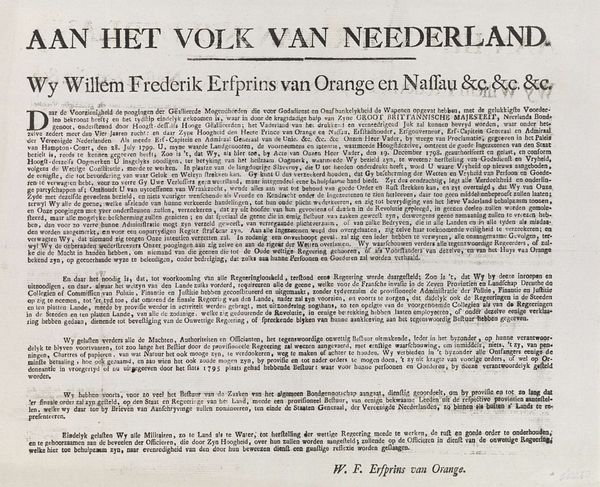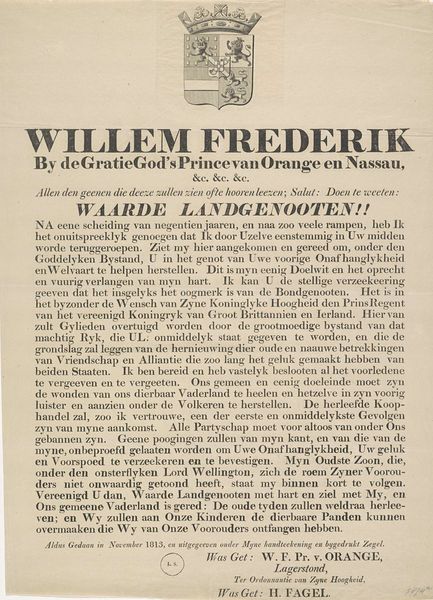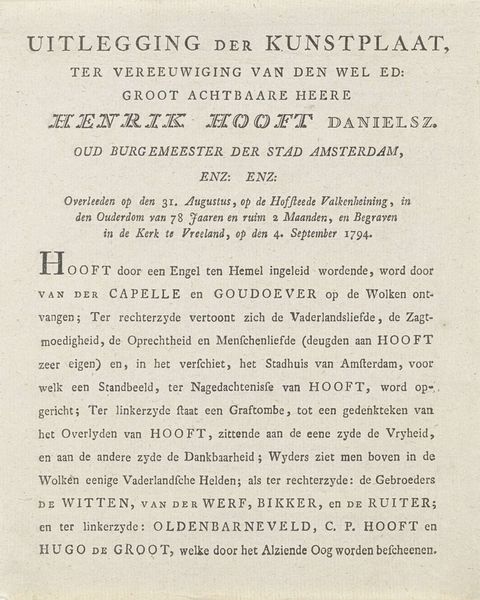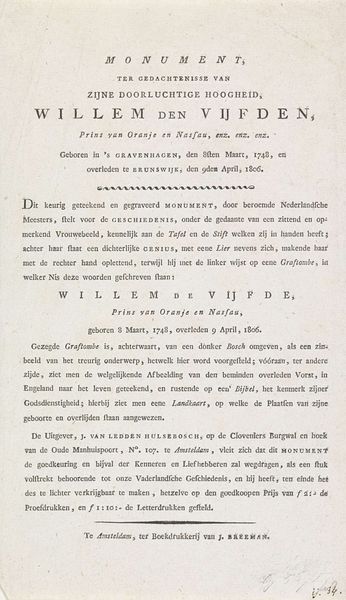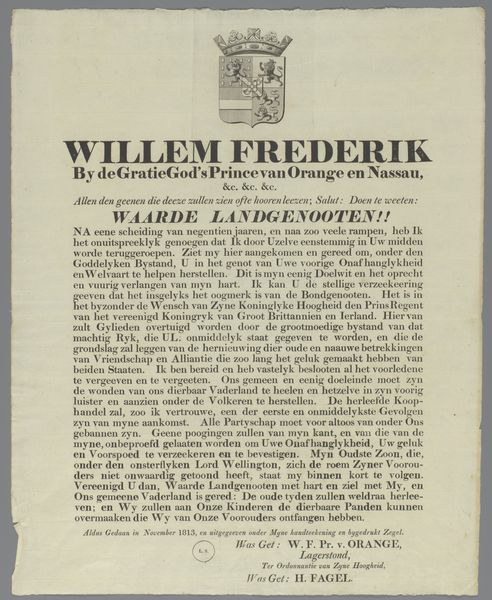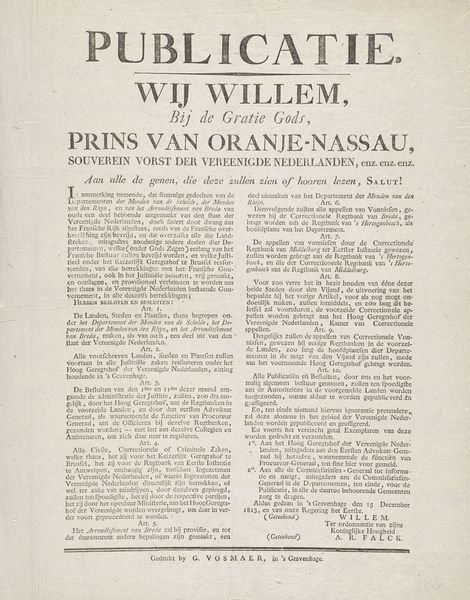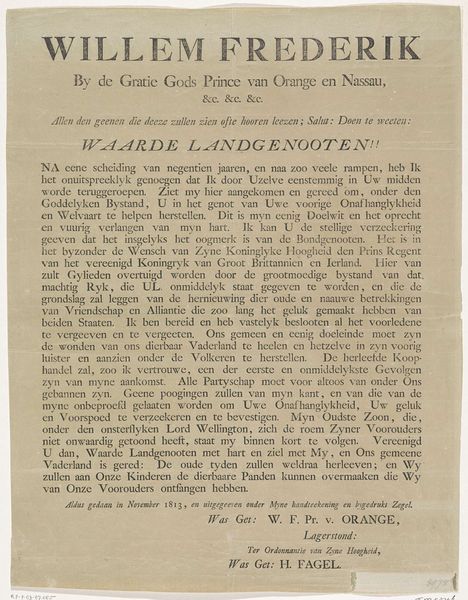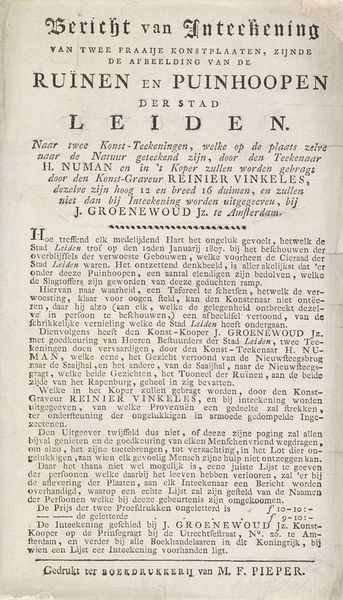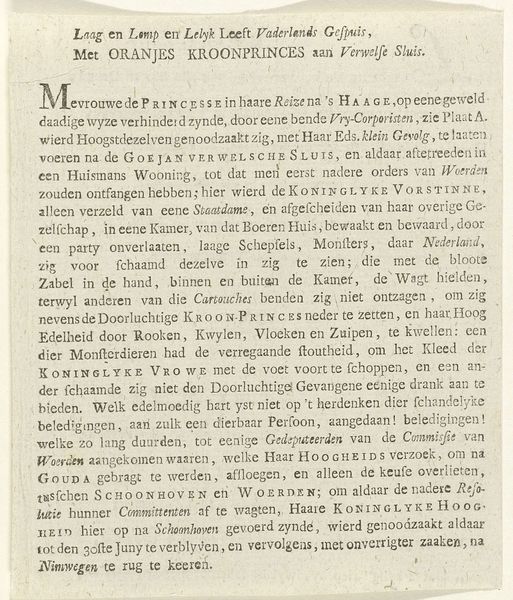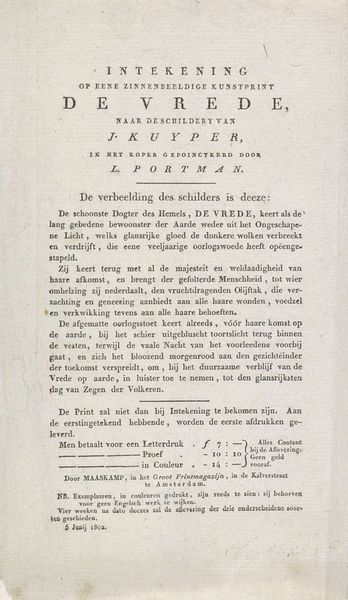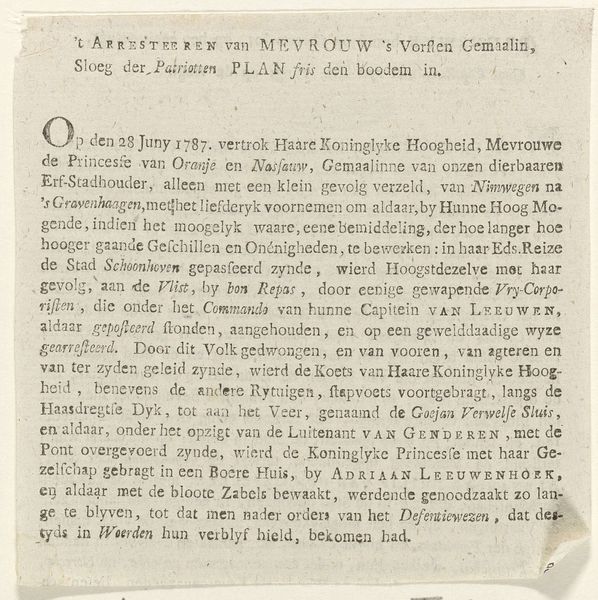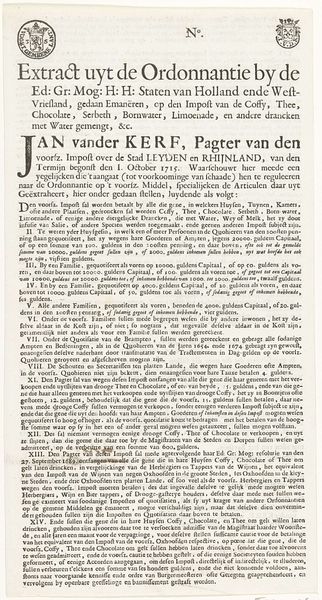
Proclamatie van erfprins Willem bij de Brits-Russische inval in de Nederlanden, 1799 1799
0:00
0:00
print, textile, engraving
#
dutch-golden-age
# print
#
textile
#
history-painting
#
engraving
Dimensions: height 271 mm, width 343 mm
Copyright: Rijks Museum: Open Domain
Curator: So, what are your initial thoughts on "Proclamation of Hereditary Prince William regarding the British-Russian Invasion of the Netherlands, 1799"? It’s an engraving, printed on textile and held at the Rijksmuseum. Editor: Well, the text itself feels dense and imposing, almost like a wall of words. It’s…official, obviously, but also a little intimidating. What do you see in this piece, looking beyond just the surface? Curator: The "wall of words," as you describe it, speaks volumes. Consider the historical moment: a proclamation announcing liberation from the oppressive "yoke of tyranny". But who is being liberated, and under what conditions? This text represents an attempt to reinstate power, not necessarily to revolutionize societal structures. Editor: So, you’re saying the language itself is a tool? Curator: Precisely. The language is a performance. It promises freedom, but through the restoration of pre-existing power structures. Look at the invocation of "ancient constitution" – what does that really mean for the disenfranchised? How does it implicate colonialism or class structures, if at all? Are there any key players who benefit from its design? Editor: That’s interesting; I hadn't considered the ways in which it might maintain the status quo while talking about liberation. I was too focused on the surface. Curator: The document functions on many levels, doesn’t it? Considering these angles enriches our understanding, by pushing beyond simplistic narratives of liberation and questioning whose interests are truly being served. It prompts to consider whose stories remain unheard within such a declaration. Editor: That gives me a lot to think about, particularly the perspective it presents versus the experiences of people living through that period. Thanks! Curator: Indeed, always try to interrogate the narrative being presented, asking: Whose voices are amplified, and whose are silenced? Only then can we begin to understand the complex tapestry of history and art.
Comments
No comments
Be the first to comment and join the conversation on the ultimate creative platform.
